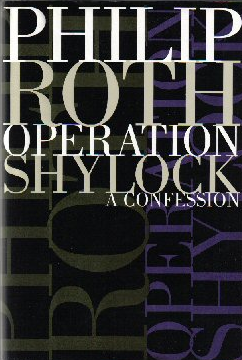In his famous essay, “The Work of Art in the Age of Mechanical Reproduction,” (1935) Walter Benjamin describes the “aura” that exists around a work of art that hasn’t been mechanically reproduced (i.e. printed off on a printing press, copied onto a DVD, etc.). The aura, he says, is the element of the work that can’t be replicated outside of its definite location in time and space, giving a ritualistic, almost mystical element that changes the way that we engage with it. This, it seems, in a nutshell, is why we like signed books, and why we often treat them as precious objects of almost totemic significance. After all, you can get the text of Mark Twain’s The Adventures of Huckleberry Finn (1884) off the internet and print out as many copies as you want, but a signed edition can’t be copied in the same way. If it gets damaged or destroyed, there’s no way of replacing it in the world.
Signed books are special, but they’re also a complex business, involving layers of intricacy and nuance that novice and even experienced collectors can have trouble navigating. To help out with that, here are a few things to consider before adding a signed book to your collection
What Kind of Signature is It?
Okay, so you’ve found a signed copy of a book that seems like it might make a nice addition to your existing collection. The first thing you need to ask yourself is: what kind of signature is it? Because not all signatures are created equal. Books signed with an autopen, or with a signature that has been added by the printers, for instance, have no added value. When a book contains a signature and nothing else, it’s considered “signed”. These can be valuable, but, contrary to what you might think, they’re often less valuable than “inscribed” copies (i.e. copies that contain a signature along with some other message, like “To Jenny, Enjoy, Stephen King”). Why is this the case? In part because the added text makes it easier to verify the authenticity of the signature (which is another crucial consideration—fake signatures are not always easy to spot, which is why it’s best to make sure you’re getting your books from a reputable source), and in part, again, because of the aura. The signature acts not just as an enhancement, but as a record of a moment in time when the book’s author and reader came together.
 Of course, not all inscriptions are created equal. The most valuable form of inscription is the “dedication copy,” which is inscribed, usually on the dedication page, to the person whose name actually appears on the dedication page. Slightly less valuable (but still often coveted) are “association copies,” which feature inscriptions addressed to close friends, publishers, agents, and other people important to the author, and “presentation copies,” which are typically inscribed and given as gifts by the author. With this last type, a dated signature is more valuable, with dates closer to publication being the most desirable.
Of course, not all inscriptions are created equal. The most valuable form of inscription is the “dedication copy,” which is inscribed, usually on the dedication page, to the person whose name actually appears on the dedication page. Slightly less valuable (but still often coveted) are “association copies,” which feature inscriptions addressed to close friends, publishers, agents, and other people important to the author, and “presentation copies,” which are typically inscribed and given as gifts by the author. With this last type, a dated signature is more valuable, with dates closer to publication being the most desirable.
How Rare is the Signature?
Once you know what type of signed volume you’re dealing with, your next key consideration is how rare the signature actually is. Some modern authors (Ken Follett and Salman Rushdie are often cited as examples) are fairly liberal with their signatures, so signed volumes of their texts might not be worth as much as, say, signed copies of Jack Kerouac’s or J. K. Rowling’s books (the Harry Potter creator has become increasingly reluctant to provide signatures as the years have worn on). By the same token, some authors are fairly liberal with signatures but less so with inscriptions and association copies. Then, there are notoriously reclusive authors like Thomas Pynchon, J. D. Salinger, and Harper Lee, whose signatures are extremely difficult to find, and are therefore extremely valuable (though, at the same time, possibly more susceptible to forgery).
Naturally, as the publication date of the volume in question gets further and further into the past, signatures become less and less common regardless of the author’s temperament or popularity. Thus, an association copy of a relatively obscure Thomas Hardy novel could easily surpass tens of thousands of dollars in value.
What is Your Goal?
By and large, whatever your existing collection is comprised of, its value will be enhanced by the introduction of a signed volume or two—but that doesn’t mean that you should rush out and buy signed editions indiscriminately. Instead, think about your goals as a collector. Are you trying to complete a set or maximize the total value of your holdings? You might be in a position to hold out for a particular puzzle piece (i.e. a dedication copy of something to form the crown jewel of your collection). Conversely, your reasons for collecting a particular author or genre might be more personal, in which case the absolute value of one particular signed copy over another might matter less to you. You might decide that, even though inscriptions are technically more valuable, you’d rather not have a book with someone else’s name on it—and that’s okay! It’s your aura, and you can do what you want with it.










